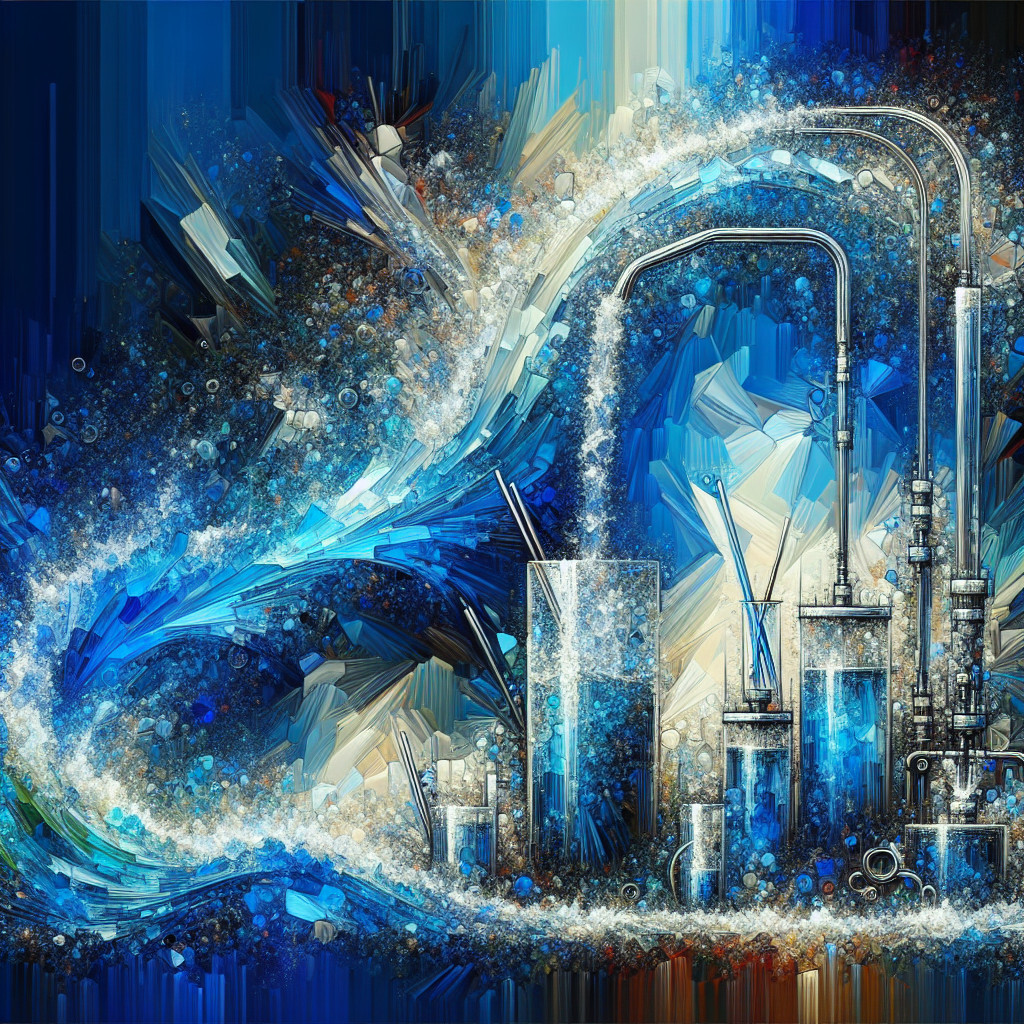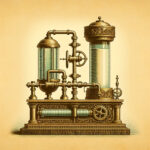-
Table of Contents
“Empower Your Hydration: Create Your Own Filtered Water!”
Introduction

Creating your own filtered water is a process that involves removing impurities from water to make it safe and clean for consumption. This can be achieved through various methods such as boiling, distillation, or using a water filter. The process can be done at home using simple tools and materials, making it a cost-effective and sustainable option for obtaining clean drinking water. It is particularly beneficial in areas where access to clean water is limited or in emergency situations.
DIY Techniques for Creating Your Own Filtered Water
Water is an essential element of life, and its quality directly impacts our health and wellbeing. While many of us rely on bottled or municipal water, there are instances where these may not be readily available or their safety may be questionable. In such cases, the ability to create your own filtered water can be a lifesaver. This article will explore some do-it-yourself techniques for creating your own filtered water.
The first method involves using a simple charcoal filter. Charcoal, particularly activated charcoal, has been used for centuries to purify water. Its porous nature allows it to absorb impurities and contaminants, leaving the water clean and safe to drink. To create a charcoal filter, you will need a container, charcoal, sand, and gravel. First, place a layer of gravel at the bottom of the container, followed by a layer of sand, and finally a layer of charcoal. Pour the water through this setup, allowing it to trickle down slowly. The gravel and sand act as pre-filters, removing larger particles, while the charcoal absorbs smaller impurities.
Another technique involves using a ceramic filter. Ceramic has tiny pores that can filter out bacteria and other harmful substances. To create a ceramic filter, you will need a ceramic element, a plastic bucket, and a spigot. Drill a hole in the bottom of the bucket, insert the ceramic element, and secure it with the spigot. Pour the water into the bucket and let it filter through the ceramic element. This method is particularly effective against bacteria and protozoa, but it may not remove viruses or chemicals.
A third method involves distillation, a process that involves boiling water to create steam and then condensing it back into liquid form. This process can effectively remove bacteria, viruses, and chemicals. To distill water, you will need a heat source, a pot with a lid, a clean container, and a way to collect the condensed steam. Boil the water in the pot, collect the steam on the underside of the lid, and direct it into the clean container. While this method is effective, it is also time-consuming and requires a significant amount of energy.
Lastly, you can also create a biosand filter. This is a natural filtration system that uses sand, gravel, and beneficial microorganisms to purify water. To create a biosand filter, you will need a container, sand, gravel, and a layer of biologically active material. Layer the sand and gravel in the container, and then add the biologically active material on top. As the water passes through the filter, the microorganisms consume the harmful bacteria and viruses, leaving the water clean and safe to drink.
In conclusion, creating your own filtered water is not only possible but also relatively simple with the right materials and techniques. Whether you choose to use a charcoal filter, a ceramic filter, distillation, or a biosand filter, each method has its own advantages and can effectively purify water. However, it’s important to remember that these DIY methods may not remove all contaminants, especially chemicals. Therefore, if you’re unsure about the safety of your water, it’s always best to have it tested by a professional.
Steps to Make Your Own Water Filtration System at Home
Water is an essential element of life, and its quality directly impacts our health and wellbeing. While many of us rely on bottled water or municipal water supply, it is entirely possible, and often beneficial, to create your own filtered water at home. This not only ensures the purity of the water you consume but also reduces plastic waste and saves money in the long run.
The first step in creating your own water filtration system is understanding the basic principles of filtration. Essentially, filtration involves passing water through a medium that traps impurities, allowing clean water to flow through. The most common types of filters are activated carbon filters, which remove organic compounds, chlorine, and improve taste and odor; ceramic filters, which remove bacteria and sediments; and reverse osmosis filters, which remove most contaminants, including heavy metals and chemicals.
Once you have a basic understanding of filtration, you can begin gathering the necessary materials. For a simple homemade water filter, you will need a plastic bottle or a similar container, gravel, sand, activated charcoal, and a piece of cloth or coffee filter. These materials are readily available and relatively inexpensive.
The next step is to assemble your filter. Cut the bottom off the plastic bottle and turn it upside down. The cap end will serve as the spout for your filtered water. First, place the piece of cloth or coffee filter inside the bottle, covering the hole. This will prevent the other materials from falling out. Then, add a layer of activated charcoal, followed by a layer of sand, and finally a layer of gravel. Each layer should be about two inches thick. The gravel traps large particles, the sand catches smaller particles, and the activated charcoal removes impurities and improves the taste of the water.
After assembling your filter, you can begin the filtration process. Pour water into the top of the filter and allow it to slowly seep through the layers and into a clean container below. The water that comes out of the filter should be clearer and free from many common contaminants. However, it’s important to note that this type of homemade filter cannot remove all types of contaminants, such as viruses or heavy metals.
To ensure the safety of the filtered water, it’s recommended to boil the water after filtration. Boiling kills bacteria, viruses, and other microorganisms that may still be present in the water. After boiling, allow the water to cool before consuming.
Maintaining your homemade water filter is also crucial. Over time, the layers of gravel, sand, and activated charcoal can become clogged with impurities. To clean the filter, disassemble it and rinse each layer separately. Replace the activated charcoal regularly to ensure its effectiveness.
In conclusion, making your own filtered water at home is a feasible and beneficial practice. It allows you to have control over the quality of your water, reduces reliance on plastic bottles, and can save you money. However, it’s important to remember that homemade water filters are not a substitute for professional water treatment, especially in areas with heavily contaminated water. Always ensure the safety of your water through boiling or other sterilization methods.
The Science Behind Making Your Own Filtered Water
Water is an essential element of life, and its quality directly impacts our health and wellbeing. With increasing concerns about water contamination, many people are exploring ways to ensure they have access to clean, safe drinking water. One such method is creating your own filtered water. This process, steeped in science, allows you to take control of your water quality and can be both cost-effective and environmentally friendly.
The science behind making your own filtered water is rooted in the principles of physical and chemical filtration. Physical filtration involves removing larger particles from the water, while chemical filtration targets smaller, dissolved particles. The process begins with coagulation, where chemicals are added to the water to bind with impurities, forming larger particles that can be easily filtered out. This is followed by sedimentation, where these larger particles settle at the bottom due to gravity.
Next, the water undergoes filtration, which is where the homemade aspect comes into play. A simple yet effective homemade filter can be created using a plastic bottle, gravel, sand, and activated charcoal. The gravel serves as the first layer of filtration, catching larger particles. The sand layer filters out smaller particles, and the activated charcoal removes contaminants and impurities on a chemical level, including chlorine, pesticides, and industrial solvents.
The science behind activated charcoal, or activated carbon, is particularly fascinating. It’s a form of carbon processed to have small, low-volume pores that increase the surface area available for adsorption or chemical reactions. These pores are so numerous that one gram of activated carbon has a surface area of approximately 3,000 m2 (or three tennis courts), making it incredibly effective at trapping impurities.
After passing through the homemade filter, the water is significantly cleaner, but it’s not quite ready for drinking. The final step is disinfection, which kills any remaining bacteria or viruses. This can be achieved through boiling the water or using disinfection tablets or ultraviolet light.
While making your own filtered water is a viable option, it’s important to note that it may not remove all contaminants, especially those at a microscopic level or heavy metals. Therefore, it’s recommended to use this method as a supplement to, not a replacement for, a certified water filtration system, particularly in areas with known water contamination issues.
In conclusion, the science behind making your own filtered water is a blend of physical and chemical processes designed to remove impurities and make water safer for consumption. It’s a practical skill that can be lifesaving in emergency situations and a sustainable practice that reduces reliance on bottled water. However, it’s crucial to remember that homemade filtration should be used in conjunction with, not as a substitute for, other proven water purification methods. By understanding and applying this science, you can take an active role in ensuring the quality of your drinking water.
Exploring the Benefits of Homemade Filtered Water
Water is an essential element of life, and its quality directly impacts our health and wellbeing. While many people rely on bottled or municipal water, there is a growing interest in homemade filtered water. This is not only a cost-effective solution but also an environmentally friendly alternative to plastic bottles. But can you really make your own filtered water? The answer is a resounding yes.
The process of making filtered water at home is relatively simple and requires minimal equipment. The most common method involves using a water filter pitcher or a faucet-mounted filter. These devices work by passing water through a series of filters that remove impurities such as chlorine, lead, and bacteria. The result is clean, fresh-tasting water that is free from harmful contaminants.
One of the main benefits of homemade filtered water is the significant cost savings. While the initial investment in a water filter may seem high, it quickly pays for itself when compared to the ongoing cost of buying bottled water. Moreover, many water filters are designed to last for several months or even years, further reducing the overall cost.
In addition to being cost-effective, homemade filtered water is also beneficial for the environment. The production and disposal of plastic water bottles contribute significantly to pollution and waste. By filtering your own water at home, you can help reduce this environmental impact. Furthermore, many water filters are made from recyclable materials, adding to their eco-friendly appeal.
Another advantage of homemade filtered water is the control it gives you over the quality of your water. While municipal water is generally safe to drink, it can contain trace amounts of chemicals and other contaminants. With a home water filter, you can ensure that your water is as pure and clean as possible. Some filters even allow you to adjust the level of filtration to suit your personal preferences.
Homemade filtered water also offers health benefits. Many water filters are designed to remove harmful substances such as lead, which can cause serious health problems if ingested over time. Some filters also remove chlorine, a common disinfectant used in municipal water supplies that can affect the taste and smell of the water. By removing these substances, homemade filtered water can improve the taste of your water and potentially reduce your exposure to harmful contaminants.
Despite these benefits, it’s important to note that not all water filters are created equal. The effectiveness of a water filter depends on its design and the quality of its filters. Therefore, it’s crucial to do your research and choose a high-quality water filter that meets your specific needs.
In conclusion, making your own filtered water is not only possible but also highly beneficial. It offers a cost-effective, environmentally friendly solution to obtaining clean, fresh-tasting water. With the right water filter, you can enjoy the peace of mind that comes from knowing your water is free from harmful contaminants. So, why not give homemade filtered water a try? It could be the best decision you make for your health, your wallet, and the planet.
Q&A
1. Question: Can I make my own filtered water at home?
Answer: Yes, you can make your own filtered water at home using a water filtration system or a water purifier.
2. Question: What do I need to make my own filtered water?
Answer: You need a water filtration system or a water purifier, which can be a pitcher, faucet attachment, under-sink system, or a whole-house system.
3. Question: Is homemade filtered water as safe as bottled water?
Answer: Yes, homemade filtered water can be as safe as bottled water if the filtration system used effectively removes contaminants.
4. Question: How often should I change the filter if I make my own filtered water?
Answer: The frequency of changing the filter depends on the type of filtration system used. Generally, it’s recommended to change the filter every 2-6 months or as per the manufacturer’s instructions.
Conclusion
In conclusion, it is possible to make your own filtered water at home using various methods such as boiling, using a charcoal filter, or a commercial water filter. These methods can help remove impurities and make the water safer for consumption.






